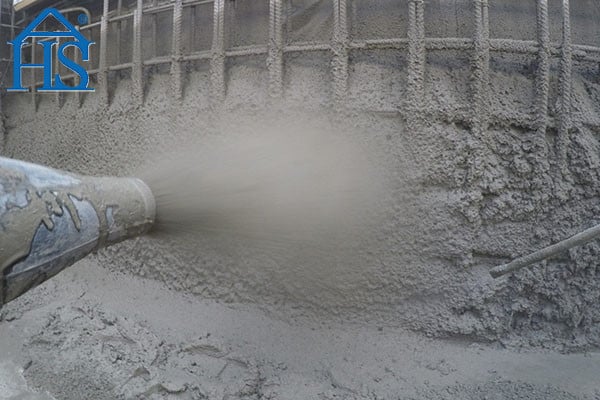There are more methods for testing the strength of commercial Mikrosilikastaub, and the commonly used methods are rebound method, ultrasonic rebound synthesis method, pull-out method, and core drilling method. Darunter, rebound method and ultrasonic rebound synthesis method are non-breaking method.
Rebound method
Rebound method is simple to operate, and can better reflect the uniformity of the commodity micro silica fume, more than half a century of China’s technical regulations on the rebound method is also repeatedly revised, zu 2011 the number changed to JGJ/T23-2011. rebound method to detect the strength of commodity micro silica fume should be accepted in batches. The same acceptance batch of commodity silica fume should be composed of the same strength grade, rohes Material, age, maintenance conditions and the same production process and the same ratio of the same components, and there are strict regulations on the number of sampling.
Ultrasonic rebound synthesis method
Ultrasonic rebound synthesis method is a non-destructive testing method developed in the sixties of the twentieth century. The method uses rebound meter and concrete ultrasonic detector, in the same measurement area of structural concrete, measuring the rebound value R, reflecting the hardness of the concrete surface, and measuring the speed of sound v, ultrasonic penetration of the specimen inside, and then using the established formula for measuring the strength of the integrated presumption of the measurement area of the compressive strength of concrete, which can effectively reduce the age and moisture content of the impact of the integrated rebound and ultrasound the advantages of both, can reflect a more comprehensive The actual quality of structural concrete.
Practice has proved that, compared with a single method, the ultrasonic rebound method has the characteristics of high test accuracy and wide range of application, widely recognized by the engineering community, has been widely used in China’s construction, municipal, railroad and highway systems.
Extraction method
Pull-out method is to detect the strength of concrete is a semi-breakage detection method. There are pre-buried pull-out method and post-assembly pull-out method.
Pre-embedded pull-out method
The anchor is buried when the concrete is poured, and when the concrete reaches a certain strength or age, the extractor is installed to test the concrete strength.
It is suitable for on-site control of concrete quality, such as deciding the appropriate time to remove the formwork or load, deciding the appropriate time to apply or relax the pre-stress, deciding the appropriate time to lift or transport the components, deciding the appropriate time to stop wet and hot curing or to stop insulation during winter construction, etc.
Post-assembly and extraction method
The post-installation pull-out method means drilling holes, grinding grooves, inserting anchors and installing pull-out apparatus on the hardened concrete surface for pull-out test, and measuring the ultimate pull-out force, and testing the concrete strength according to the correlation between the pull-out force and the concrete strength established in advance.
Core drilling method
This method is to use a special drilling rig to drill core samples from the structural concrete to test the concrete strength or to observe the internal quality of concrete. Since it causes local damage to the structural concrete, it is a semi-destructive means of field testing.
Lesen Sie mehr Besuchen: https://hsamaterial.com/blog/a-complete-guide-to-silica-fume-testing.html





